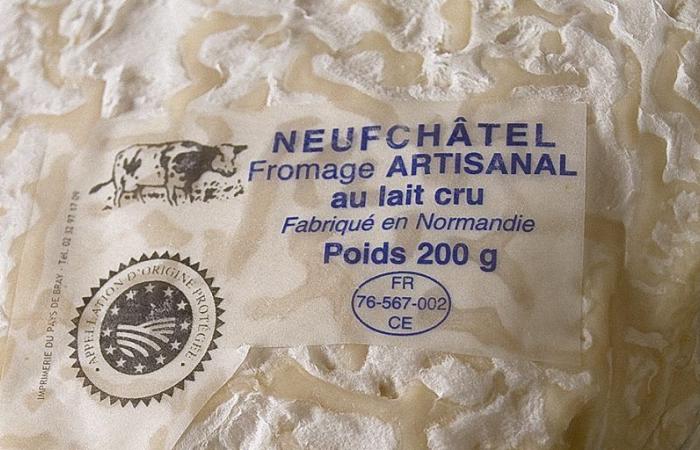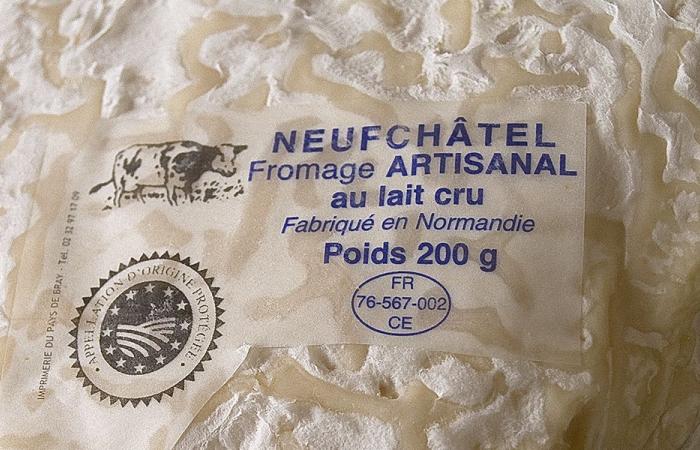In order to fight against fraud, the French label of Appellation d’origine contrôlée (AOC) was created in 1905. This label’s role is to highlight products whose manufacturing and production process is part of in strong connection with the territory in which it is made and it allows the definition and respect of strict specifications which govern their development. This policy of promoting French agricultural products gave rise to the Protected Designation of Origin (PDO) label, its equivalent at the European level, and the Protected Geographical Indication (PGI) label, less restrictive, in 1992. They are mainly used by manufacturerslet’s make no mistake.
But what do these labels really cover? Are they a guarantee of quality? What must manufacturers follow? How to identify them and are they truly superior to other similar products? Zoom in on an acronym of value that is often lost in the vagueness of opaque labels.
AOP, AOC and IGP: what are we talking about?
The acronyms AOP, AOC or even IGP are grouped under the category of Identification signs of quality and origin (SIQO)attributed to various food products. But faced with all these names, it is difficult to fully understand what each one means and covers, but also what they really frame. Overall, you should know that the AOP and IGP labels are labels recognized at European level since 1992 and which provide for compliance with precise specifications established for the purposes of protecting the production of the products concerned. The AOC label, for its part, is an equivalent of the AOP label on a French scale.
Let’s break them down to see more clearly.
- The Protected Designation of Origin (PDO) labelrecognized on the scale Europeanis granted to products which comply with strict specifications which define all the stages of manufacturing of said product and its production in compliance with recognized know-how and within a specific geographical area.
- The French label Appellation d’origine contrôlée (AOC)recognized on the scale française, designates products which meet the same criteria as those of the AOP label, in particular to protect the name in France. But it can also be applied to products that are not covered by the European level.
- The European Protected Geographical Indication (PGI) labelrecognized on the scale European, is granted to products which include at least one production stage carried out within a specific geographical area. It is through this characteristic that these products are considered specific. On the other hand, you should know that the IGP label cannot be granted to a product already labeled AOP, as the two labels cannot be combined. In short, this label is much less restrictive since it only imposes its requirements on one of the stages, in principle the transformation of the product, which must be carried out within a given geographical area.
So, as you will have understood, the AOP or AOC label makes it possible to certify that a product respects the commitments established by the specifications concerning its origin, production, development and transformation. The AOP label was implemented in order to standardize the various equivalent labels that each country has put in place (including the AOC label in France) in order to promote the European market and its export, but also to ensure more harmonized respect. Standards. The choice of the term AOP thus makes it possible not to replace the national AOC label and to promote clearer coexistence for consumers. Conversely, the Rouge label moved from the French scale to the European scale without changing its name.
In principle, European countries therefore share the same AOP logo which represents a red cultivated field. For the IGP, the logo is blue.
Within the European Union, there are more than 2,000 AOP labeled products. In 2023, 6 new products were added to the 489 AOP/AOC products already listed in France. Thus, in 2023, Cévennes chestnuts, Bourbonnais chicken, Languedoc olive oil and three wine productions will join the 102 agri-food products already present on the list.
AOP/AOC and legislation: where are we? What does the label cover?
If buying an AOP/AOC labeled product is in principle a guarantee of quality, what does this notion of quality really entail? Is the image of the breeder who milks his cow’s udders before transforming the harvested milk into cheese with his traditional equipment and selling it at the market stall, often conveyed by advertising, true?
Let’s say that when a consumer buys an AOP/AOC product, he has the guarantee that its product is traced and officially controlled. Thus, the producer and all the actors who contributed to the development of this product were forced to respect all the rules and production conditions that the specifications laid down. It is therefore a guarantee of the fact that the product is strongly linked to its territory.
But who defines these specifications?
INAO and the Ministry of Agriculture and Food
The specifications which govern AOP products are not drawn up at random. The Ministry of Agriculture and Food is beginning to define a regulatory framework to be respected in order to clarify the policy of quality and protection of products which meet a certain quality within Europe and France. To do this, it is supported by the National Institute of Origin and Quality (INAO).
It is the INAO which is responsible for processing requests for labeling, adaptations and modifications to specifications, but also for managing the various controls which make it possible to verify that the production conditions of labeled products are respected, via the intervention of approved organizations.
Currently, three European regulations have been implemented to govern the AOP and IGP labels, namely a specific regulation for wines, a specific regulation for spirits and a specific regulation for other agri-food products.
Obtaining the AOP/AOC label: what is the process to follow?
To obtain the AOP/AOC label, producers or groups of producers who wish to protect a product from their territory can undertake a collective approach in this direction. They must submit a request to the territorial delegation of INAO services so that it can assist them in compiling their file. It goes without saying that to obtain the label, it is essential to highlight the link that unites the product to its territory of origin.
You should know that to obtain the AOP/AOC label, the product must meet the specifications that govern it. However, each product is constrained by its own specifications. The rules will therefore vary for a cheese and for a wine, but also between two cheeses, including if they come from the same territory. Depending on the specifications, the rules are more or less restrictive.
AOP/AOC label: what is the benefit for the consumer?
What is the benefit for the consumer of choosing an AOP/AOC labeled product? Will it be of better quality than another? Is it a traditional or industrial product?
When the consumer only has this label, he can be assured that the product he is purchasing complies with quality standards. quality and that he was conmade in compliance with the criteria of its territory. Consequently, he knows that the product is of superior overall quality to the extent that all phases of its development have been carried out within its given geographical area.
However, many manufacturers play on these labels to attract consumers who are not really deceived because these AOP/AOC labels do not at all guarantee artisanal manufacturing. For example, it produces a large number of AOP/AOC products from the manufacturing lines of Lactalis, the giant of the cheese industry, “the world’s leading player in AOPs” which it owns by the dozen… Proof thatan AOP/AOC product is not necessarily good and non-industrial !
But some people abuse it so it is important to be vigilant to avoid being fooled. Let us cite the example of pizza manufacturers who promoted their range under the AOP label even though the product in question only contained a tiny portion of AOP labeled cheese, and was much less used than other non-labelled cheeses. within the recipe. In this case, there is deception! Likewise, certain major retail brands play on the notion of label by setting up their own labels in order to sow confusion among consumers.
Please note, however, that other products which do not benefit from the AOP/AOC label are not of lower quality or less authentic. Indeed, under the strict legislation implemented to regulate these labels, certain producers cannot obtain it because of a simple detail. However, if you go to a small local producer, you can be assured of almost the same guarantees.
You should also know that obtaining such a label has a cost that can be difficult to bear for small producers. Indeed, costs must be incurred to have specific equipment or to finance mandatory audits. Finally, for some producers who use traditional methods, being forced to modify their technique to respect those imposed by a specific framework does not always present any real interest.
To consume more healthily and of quality while promoting the traditional productions of our territories, everyone must remain attentive and not trust the beautiful promises on packaging. Unfortunately, it is necessary to go further.






